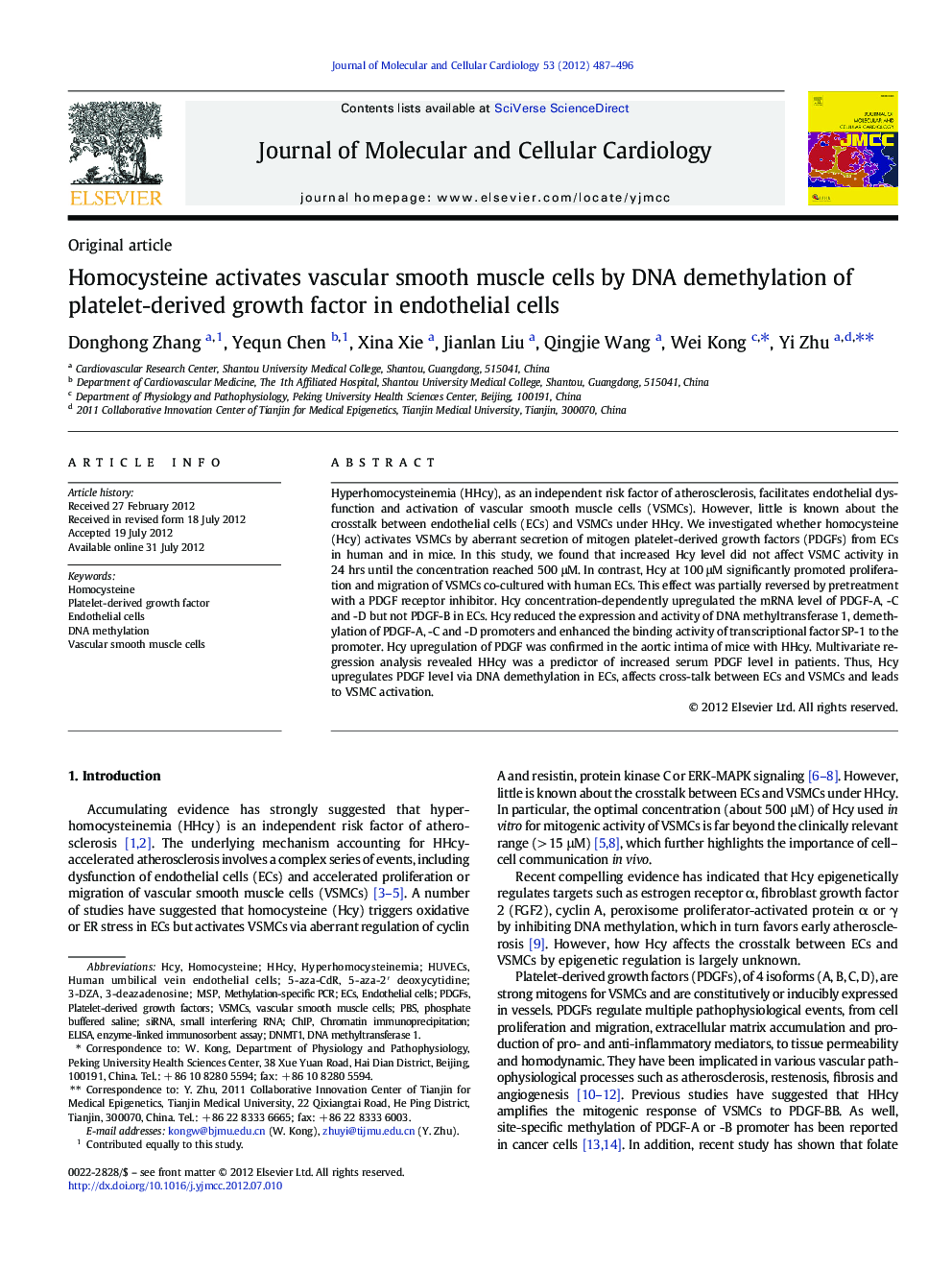| Article ID | Journal | Published Year | Pages | File Type |
|---|---|---|---|---|
| 2190635 | Journal of Molecular and Cellular Cardiology | 2012 | 10 Pages |
Hyperhomocysteinemia (HHcy), as an independent risk factor of atherosclerosis, facilitates endothelial dysfunction and activation of vascular smooth muscle cells (VSMCs). However, little is known about the crosstalk between endothelial cells (ECs) and VSMCs under HHcy. We investigated whether homocysteine (Hcy) activates VSMCs by aberrant secretion of mitogen platelet-derived growth factors (PDGFs) from ECs in human and in mice. In this study, we found that increased Hcy level did not affect VSMC activity in 24 hrs until the concentration reached 500 μM. In contrast, Hcy at 100 μM significantly promoted proliferation and migration of VSMCs co-cultured with human ECs. This effect was partially reversed by pretreatment with a PDGF receptor inhibitor. Hcy concentration-dependently upregulated the mRNA level of PDGF-A, -C and -D but not PDGF-B in ECs. Hcy reduced the expression and activity of DNA methyltransferase 1, demethylation of PDGF-A, -C and -D promoters and enhanced the binding activity of transcriptional factor SP-1 to the promoter. Hcy upregulation of PDGF was confirmed in the aortic intima of mice with HHcy. Multivariate regression analysis revealed HHcy was a predictor of increased serum PDGF level in patients. Thus, Hcy upregulates PDGF level via DNA demethylation in ECs, affects cross-talk between ECs and VSMCs and leads to VSMC activation.
► Hcy activates Vascular Smooth Muscle Cell (VSMC) partially via Endothelial Cell (EC). ► Hcy transcriptionally upregulates PDGF-A, -C and -D in ECs, but not in VSMCs. ► Hcy-reduced DNMT1 expression or activity is involved in PDGF demethylation in ECs. ► Hcy positively correlated with increased serum PDGF level in clinical patients.
